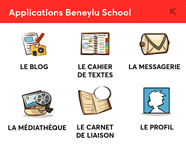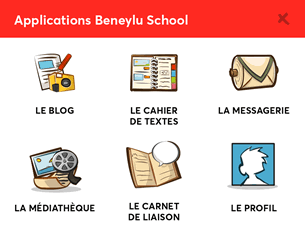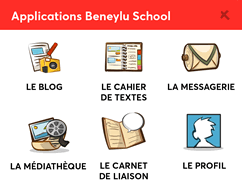10 ways technology can inspire in the classroom
8 min. readingRecently, a group of children were asked what they thought their teachers did during the summer.
It’s easy to imagine the answers blurted out from the youngsters’ mouths. Visions of teachers lounging by the pool, playing video games, and working on computers were just a few of the samplings offered by the students.
Unfortunately, contrary to our young charges’ popular beliefs, a teacher’s summers are not typically spent lazily dreaming away steamy days and nights.
With a little planning, we can harness a child’s love for technology by using apps and tech in our classrooms to inspire students to achieve and explore concepts in ways that are meaningful.
While our little learners are enjoying a few months of summer bliss, many educators are busy preparing for the upcoming school year by taking professional development classes, attending workshops, and formulating lesson or classroom plans.

Thankfully, when the vacation is over our toil has the potential for big rewards when the school bell rings in the fall.
With a little planning, we can harness a child’s love for technology by using apps and tech in our classrooms to inspire students to achieve and explore concepts in ways that are meaningful and have purpose.
10 ways to use technology in your classroom
To help you make the most of your summer or planning periods, we have compiled the following list of technologies to introduce in your classroom this year:
1- Learning Management Systems.
Look for apps and programs that allow students to track their behavior and accomplishments that provide feedback in a timely manner, while still having fun!
As an added bonus, parents can check in daily for a child’s updates.
2 – Quiz or Game Based Learning Platforms.
These sites allow teachers to check for understanding without using a traditional worksheet.
You simply create or use pre-made quizzes on any subject for an interactive option that allows students to answer with buzzers, clickers, or from any wireless device like a laptop or tablet.

3 – Presentation Software.
There are a variety of great tools available for organizing information while allowing a child freedom to map their concepts and data in a unique presentation format.
These range from traditional powerpoints to interactive concepts maps that allow students more freedom when it comes to organizing their thoughts.
4 – QR Codes.
For an interesting twist on giving directions, try placing codes around the room or near centers, requiring students to scan them with their tablets to uncover their assignments.
5 – Connected Classroom Forums.
These are great resources for teachers to connect with fellow educators and share ideas.
Perks to these sites are the networking, sharing of ideas, and even some provide the abilities to connect classrooms with virtual field trips that will excite kids and teachers alike!
6 – Blogging.
Ditch the journals and allow students to create free individual or classroom blogs to make reflecting, journaling, storytelling, and informing fun and meaningful.
By giving students this option, they will be writing to publish which will make their writing have purpose.
7 – Educational Apps and Games.
There is literally an app or game available for any subject. Simply type in the lesson and grade level to find a variety of apps to extend lessons.
For instance, if you are teaching the periodic table, consider using Element games.
If you are looking to expand on social or emotional literacy, search for a variety of games that allow students opportunities to hone their skills.
8 – File Hosting Services.
Use these online programs to make it easier for students to access, backup, upload, store, or share information, presentations, and videos at school AND home.
This technology takes the stress out of group projects, automatically saves work every few seconds, and allows students access to their work from any computer at home or school.

9 – Publishing Programs.
These programs provide a myriad of ways for teachers to organize newsletters, projects, and more.
It can also be used by students to create brochures and display information for assignments or science projects.
10 – Animation apps.
Find applications and programs that allow students to implement stop animation or movies to illustrate their own writing or conceptual understanding for topics.
There are numerous programs available that allow boys and girls to expand on their knowledge, while being engaged and using technology at the same time.
Looking ahead…
Several educational research projects have found a strong correlation between the use of learning apps and an increase in a child’s retention.
A recent study from the Department of Education found children who used a PBS mobile app daily for two weeks, featuring the popular show Martha Speaks, improved their vocabulary skills by 31 percent.

This is hopeful for educators, because technology might be the key to unlocking our students’ academic potential by inspiring them to achieve and be actively involved in their education.
We are teaching digital natives who can swipe and tap a screen with exact precision.
Instead of lecturing daily about good social media habits and manners, we need to allow them opportunities to practice these life skills in a safe environment while engaging their brains.
So while our students are chasing fireflies and running down the ice cream truck this summer, we can sip our lemonade knowing we plan to utilize technology in our rooms, giving our boys and girls the tools to succeed years from now while making learning fun and engaging.
Crédits photo : © Pixabay










